Introduction and Development Description
Environmental impact assessment has the objectives of determining effects of a proposed project on a site of location of the same project. The proposed M Field development comprises of the following:
- The drilling of three production wells
- The installation of a 76km 16’’ pipeline with a piggyback 3’’ methanol line that will transport fluids from the rig to an onshore JOHNSTON terminal, created by the M Storage Limited
- The installation of a Normally Unmanned Installation (NUI).
Site description
The proposed development is intended to be located in the Northern Seas 54o 01’00” N, 01o30’00”E on the north eastern part of UK. Area has moderate weather conditions; it doesn’t experience rough weather more often. This area is located within the continental shelf of the UK.
Biodiversity and Identification
The Development shall be executed with a view to conserve and protect any biodiversity close or within the environs of M. a survey has been conducted concerning biodiversity: birds, fishes and any other mammals that exist in the location. Following EU directives, a thorough research has been carried out to determine Special Areas of Conservation (SACs) as well as Special Protection Areas(SPAs) in the offshore area of M. as a result expected impact on the environment’ s biodiversity has been determined and assessed.
Seasonal environmental sensitivities
The M field Development area is offshore. The area is has a high commercial fishing activity using trawlers. However, the shipping activities are of a moderate scale. The region has also been identified to be a spawning area cod, herring, sprat, lemon sole and Sandeel. Each spawns as follows: cod (January and February peaking in February and March), herring (August to October), Sandeel (November to February), Lemon sole (April to September) and sprat (May to August). Spawning of cod and herring is affected by seismic survey, as a result a number or restrictions are in place that inhibit carrying out seismic survey during the spawning seasons of August and October and April, which corresponds to the spawning periods of Cod and herring respectively.
Site surveys also revealed a high number of seabirds around the M Development area. The vulnerability is high for the sea birds throughout the year. There is presence of cetaceans but the occurrence is in very low numbers. Their occurrence have not been accurately documented in terms of their seasonality.
Habitat Directive: Annex 1 Habitats
From the survey report, M Development area is rich in stony reefs. These reefs were found to lie in the potential pipeline routes linking M field and the onshore M storage facility. Annex 1 species were not recorded during the survey; therefore they are not in the vicinity of the M Development area.
Habitat Directive: Annex II Species
Although occurring in low numbers, there are sightings of harbor porpoises at M. the highest sightings occur in the months of April to June. There are also infrequent sightings of Whiteside dolphins which occur in the months of May and September. Harbor seals also may appear during the months of May to September but the M Development area does not pose any impact on their environment since the proposed location M is far away from the shoreline. With regard to porpoises, noise generated from the drilling activities and seismic survey does not cause a threat to them. Noise in particular causes less disturbance. They have been found to use low frequency sounds in their vocalizations.
Other marine life in M field
Other marine life present in M field is a variety of sharks, dolphins and coral reefs. They do not occur on a large scale but they do have an assessment impact for us. The area does not have a diversity of aquatic flora. The fishes that were mentioned focused on commercially important Warner, R. 2008. However, there exist also shrimps and lobsters.
Commercial fishing activity
Commercial fishing activity occurs all the year round. Fish types caught at this region are mainly cod, herring and sprat. The technology employed by the fishing industry here is the use of trawlers. With respect to nearest protected sites, the proposed development is not in the vicinity of any offshore marine protected site. The project therefore is not in a zone of Special Protection Areas (SPA).
Impacts and Ways of Mitigating Environmental Hazards
The key potential environmental impacts and their mitigations as addressed by EIA are as follows:
Disturbances and obstacles to other marine activities – the main obstacles shall occur during construction, installation, and production process. They will include: the drilling rig, associated standby vessels, supply vessels and the periodic shuttle. These activities are expected to increase the number of shipping activities around the M Development site. As a result of high shipping traffic, 35 traffic routes were identified a 12 nautical mile radius of the proposed M Development. This prompted a watchful examination of three routes passing within 0.5 and 0.7 nautical miles from the proposed M Development installation, for a possible collision risk. Results showed reoccurrence of a risk was possible in 6200yaers. Therefore, the results led to establishment of a collision risk management plan being established for minimizing risk of vessel collisions. Another plan that was put in place involved a system of in advance information and notification to regular runners of the area to create awareness to them of the up-coming activities and operations. This will involve designation of safety zones. Mariners, Very High Frequency and navigational authorities will help in the promulgation of the use of these safety zones.
Seabed disturbances – these activities shall result from installation of subsea infrastructure, drilling, seabed pipe lays. The proposition is to lie about 76km of 16” pipeline having a magnitude to disturb a seabed area close to 0.778km2. From this approximately 500, 000m3 are expected to be excavated and stored alongside the trenches being used for mechanical backfilling on completion of pipeline installations. This process shall have a direct impact on the nature of the seabed but residual impacts on the seabed and the water quality shall be considered negligent since they have a temporary nature (Hydman et al, 2006). In addition a number of faunal communities shall be affected by the establishment of the trench, however most of the tax present in the dominant and tolerant to smothering. These dominant species are taken to be the representative of the North Sea are resulting to an assumption that any impacts to them are negligible.
Oil rig – The presence of the oil rig itself has an impact on the area taken up by the spud cans of the jack-up. The proposed M Development is intended to use three spud cans. Each spud can takes up a total area of 308m2. Therefore the total area taken by the three spud cans is estimated to be924m2. Any stabilization to the rig may need material additions up to 6,000 tonnes resulting to an increment in the impacted area to 1038m2. Recolonisation is expected to take place on movement of the rig off location, since the nature of the water currents and sediments, the deposited rocks will eventually be covered with sediments, causing the surface of the seabed to recover its previous state.
Handling and disposal of produced water
Water produced at the M Development site shall contain traces of poly acryl amine potassium chloride; the mud used the mud that will be used during the entire drilling process. Largely, produced water in this project shall come from formation water occurring with the oil. Part of produced water shall come from injection of water in the oil wells (Boyes, 2010). For this project the only foreseeable produced water will come from the drilling operations. The volume of this water shall be expected to come in large volumes. The usage of water-based mud during drilling is environmentally safe and can be discharged. However, offshore discharge shall not be taken as an overall handling solution. Frequent samples shall be tested for contamination and appropriate treatment measures taken before the water is either discharged offshore or exported on land as deemed necessary.
Handling drilling mud and drill cuttings
For M Development project, a base case for three platform wells is proposed. The three wells shall generate a total of 4800 tones of cuttings and shall be discharged at sea. This follows an assumption that the composition of these cuttings will be largely rock fragments. Henry, N.J. (1991). Metallic chips from drilling bits shall form a very minute percentage of the cuttings; they are therefore not significant to the environment of their discharge. Furthermore, the rock fragments forming a total mass of 4800 tones is taken to be chemically inactive, and shall not cause any chemical changes to the water column above them or the faunal species surrounding where it settles. Our cuttings modeling show that 56% of the cuttings within a 70 m radius of the location of each well, 95% within 220m and 99.5% within 620m. 0.5 % will constitute finer particles capable of travelling up to 1.9 km from the location of any of the three wells. The predicted maximum cutting depth of the cuttings is 2.3cm. Impacts, if any from the cuttings will be local, if not transitory since a larger portion of the cuttings to settle or quickly disperse. Smothering is expected within the vicinity of the wells. However, the North Sea region experiences relatively high tidal currents giving likelihood that the cuttings will either quickly mix with the naturally occurring sediments and/or disperse. Water based mud of partially hydrolyzed polyacrylamide potassium chloride is a CEFAS registered chemical and is not considered to be significantly harmful to the environment.
Drilling fluids and chemicals
Drilling process will only use partially hydrolyzed polyacrylamide potassium chloride, which is a water based mud Darly, CHH & GRAY, R.G. (1988). Any other chemical or fluid is CEFAS registered and therefore considered to cause insignificant harm to the water environment. A provision is in place for undertaking further risk assessment during subsequent chemical permit applications for pipeline applications, drilling and/or Normally Unmanned Installation. Orzuloik, T.S. (2008).
Overboard discharges
This discharges shall include food wastes, sewage, cuttings, water based mud and cement. Sewage shall be treated together with food wastes so that their discharge overboard causes no BOD or COD significance to the surrounding aquatic environment. Another measure will be to pack food wastes in containers and discharge them on land. Cuttings and water based mud are environmentally friendly and can be discharged overboard Devereux, S. (1999). Plans are provided for testing of the samples from these overboard discharges so that every discharge has certainty of insignificant environmental impact.
Cementing chemicals
The cementing chemicals to be used in this project are all chemicals registered under CEFAS. With the CEFAS registration status, their harm to the environment shall be considered insignificant. Besides their use shall be short term.
Contingency chemicals
Contingency chemicals to be used shall strictly be limited to restrictions and provisions under CEFAS and shall assume a similar usage and treatment as water based drilling fluids
Noise emissions from M Development Proposed Operations
The proposed development is likely to generate noise related to: drilling operations, installation of NUI, pipeline installations, vessel activity and decommissioning operations. Noise disturbances resulting from the operations of M Development project are expected to be low frequency. Sound intensities of 160 and 240 dB re: µPa are expected to come from drilling and piling operations of M Development operations. Operations in proposition may exceed the sound pressure level injury thresholds. The likely mammal present during the operations will be the harbor porpoise but they occur in very insignificant numbers.
The expectation is that sound from this activities may exceed behavioral thresholds but not within a distance of about 1km from the sound source. Piling activities may realize a slightly increased number of harbor porpoises but M Development is out to undertake mitigation as stipulated within the JNCC guidelines for minimizing disturbance and injury to marine animals resulting operations due to drilling offshore Richardson, W.J., Greene, C.R., Jr., Malme, C.I., and Thomson, D.H. 1995. The activities are short term implying that they may impart very low residual impacts on marine mammals especially the harbor porpoise. Due to the nature of time associated with the drilling and piling operations, and owing to the fact that there is no European Protected Species in the vicinity, it is unlikely that the activities will cause any contravention to European Protected Species.
Mitigating noise emissions
Noise from the drilling and piling activities is inevitable. Mitigation measure therefore will not be centered on sources of noise but on the availability of victim animals in the vicinity of the proposed M Development site. This will include timing the occurrence mammals like porpoises and mapping there high concentration regions so that they are outside the one kilometer effective range for injury. M development will also be committed to supporting research projects aimed at establishing the behavioral impacts of sound on marine mammals.
Accidental Discharge, Oil Pollution and its response
Discharges foreseeable are due to M Development may come from drilling operations and possibly, pipeline commissioning as well as from the usage of rigs and vessels during construction Davidson,W.F, Lee, K & Cogswell, A. (2006).. Accidents may be possible with oil and condensate gas reservoir spillages resulting to blow out scenarios. With a 6% probability, our modeling gives a 55-day period for a gas condensate flowing at maximum rate 2000bbls/day to reach a coastline. The dispersal rate of oil is within seven hours with a 0% probability of reaching a 76km English coastline. Control measures will be put in place to minimize risk due to such accidents including an Oil Pollution Emergency Plan (OPEP) and Emergency Procedures Plan (EPP). The OPEP will have three divisions, that is, an administrational unit, laboratory and testing Unit and a combative unit.
Gas Flaring and Gas Utilization
Air Emission
Flaring shall be adopted as a temporary measure to control the waste gasses emission into the atmosphere. M Developing shall not adopt flaring as a long term solution to waste gases management but it shall seek to reduce it. The method we shall adopt is to foster corporation with other offshore and onshore drilling companies and to initiate innovative measures aimed at finding methods of reducing flaring. Secondly M Development Project will support research on flare combustion efficiency to bolster the re-use of gases which were previously flared as wastes (Kahn & Islam, 2007).
Air emissions will occur mainly during drilling, pipeline and NUI installations and from NUI operations and maintenance. Drilling operations are expected to cause a significant increase in the quantity of carbon dioxide in regions around and relatively away from the location of the M development. Based on the UK 72 day emissions from the energy sector, about 1422.33 tonnes of CO2 are expected to be emitted during the drilling and the NUI operations. Azar, J.J & Samuel, GR. (2007). These operations will be under a highly planned control in order to reduce the timing of the operations thus making it possible to achieve UK 72 day emissions from the energy sector.
Calculation of emission factors
Emission factors shall be determined by keeping an inventory on the tones of CO2 and other gases that possible. The emitted gas inventory shall be kept for each gas so that factors for calculation can be assigned based on accurate information about an emitted gas in question.
Abandonment Programme
Decommissioning
Following any need to abandon the well, re-assessment of the entire environment a way and in the vicinity of the M project will be done. The parts to be removed or left behind during decommissioning will depend largely on impact assessment based on the environmental impacts around the region when left behind. Since the M area is a fishing site we will contact a maritime survey to determine the response of trawler operators concerning the unit.
The main recommendations are:
- The wells will be unplugged during abandonment
- The topsides modules are removed and returned to shore for reuse, recycling or disposal-if it is seen as proper that some parts of the NUI installation can be recycled, as recommended the top sides modules may be removed for reuse and recycling.
- As recommended the steel jacket will be removed down to the top of the footings and shipped to shore for reuse, recycling or disposal. The jacket footings are left in place
- The pipelines will be flushed clear of hydrocarbons and left at the site for possible future use if any need arises
The drilling cuttings shall be left at seabed.
Conclusion
In the event of establishing an offshore drilling project, its acceptance depends on the scope and extent of environmental assessment impact. Satisfactory information has to be given to bodies of concern. By bodies of concern, I mean that stakeholders have to be convinced that the project is environmentally friendly and therefore viable. The overall information supplied in this statement/proposal is given from the best of surveys done around the M Development region. The proposed site for M does not fall in any areas designated as SPAs or SACs. The lack of this designation recruits this area for offshore drilling activities. The assessment statement has shown that there are little environmental hazards associated with proposed activities of the project.
Reference list
Ayoade, M. A., 2002. Disused Offshore installations and pipelines: towards a “sustainable decommissioning”. The Hague
Azar, J.J & Samuel, GR., 2007. Drilling Engineering. Oklahoma: PennWell Corporation. Pp45.
Boyes, W. (2010). Outlook for oil and gases 2010.Oxford: Butterworth-Heinemann.
Darly, C.H. & Gray, R.G., 1988. Composition and properties of drilling and completion fluids. Houston, TX: Gulf Publishing Company. Pp 1-3
Davidson, W.F, Lee, K & Cogswell, A., 2006. Oil spill response: A global perspective. Dordrecht: Springer.
Devereux, S., 1999. Drilling technology in nontechnical language. Oklahoma: PeanWell Corporation. Pp. 196-197
Henry, N.J., 1991. Dictionary of petroleum exploration, drilling and production. Tulsa: PennWell Publishing Company pp. 190.
Hydman, W. et al. 2006. Natural hazards and disasters. Belmont: Cengage Learning.
JNCC. 2011. SAC Interest Features. Web.
Lambert, Y et al., 2003. Using environmental Biological Indices as Proxies for Egg and Larval Production of Marine Fish. Journal of North West Fishery Science. Vol. 33: 115-159. Web.
Marine maps provide a detailed view of the North Sea., 2003. Deep-water Fisheries of the North Atlantic: Assessment Management Approaches. Journal of North West Fishery Science. Vol. 33: 151-163.
McCauley, R.D., Fewtrell, J., and Popper, A.N., 2003. High intensity anthropogenic sound damages fish ears. J. Acoust. Soc. Am. 113: 638-642.
Orzuloik, T.S., 2008. Environmental technology in the oil Industry. Hampshire: Oxford
Richardson, W.J., Greene, C.R., Jr., Malme, C.I., and Thomson, D.H. 1995. Marine mammals and noise. Academic Press, New York, 576 pp.
Warner, R. 2008. Protecting the diversity of the depths: environmental regulation of bioprospecting and marine Scientific research beyond national jurisdiction. Ocean Yearbook. 22: 411-443.
Wysocki, L.E., Dittami, J.P., and Ladich, F. 2006. Ship noise and cortisol secretion in European freshwater fishes. Biol. Conserv. 128(4): 501-508.
Appendix: Marine animals of the North East Atlantic Sea
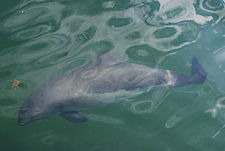
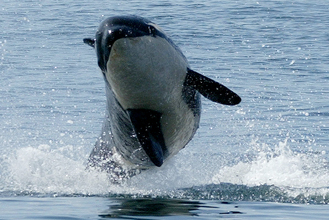
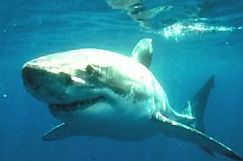
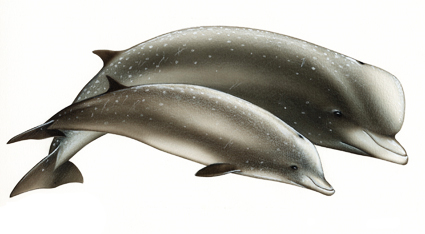
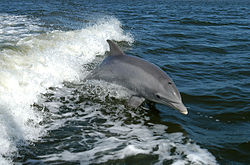
Correction and Clarification
Sound generated in the M field shall be received by the marine animals. However, the effect will not be severe as to significantly disturb the marine animals there. Research showed that, the vocalization of most marine animals especially the harbor porpoise involves the use of low frequency thresholds. As expected, drilling will be the main source of low frequency noise. The effect on the marine animals especially the harbor porpoise which is common around M Field will not be significant. Besides, the exposure of this animal to the noise will be short, thus mitigating a big impact of noise disturbance.